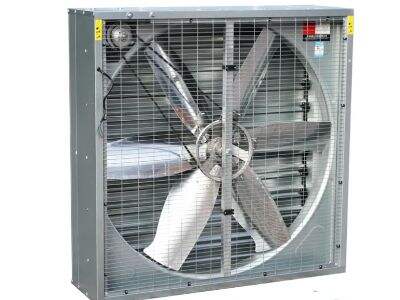the importance of ventilation to feed quality
Industrial ventilation fan ensures when feed in bins that it is fresh and healthy for animals. Feed will spoil and can grow molds if left without good airflow. This spoilage can steal vital ingredients from the feed, which can be detrimental to the animals that it is fed to.
Why Ventilation Prevents Ruin and Mildew
Well-ventilated feed bins maintain the correct temperature and moisture. This can make it more difficult for mold and bacteria to flourish. Feed can spoil and become moldy very rapidly when wet and with no airflow. Not only is moldy feed a bad taste for animals, they can get sick if they eat it.
4) Airflow and it's Impact on Temperature & Moisture
Good ventilation is essential in regulating temperature and moisture in feeders. Air circulating can help prevent heat and humidity buildup that might cause spoilage. And, with good airflow, feed is kept dry and cool so it can survive for a longer period of time with minimal spoilage.
Better Ventilation of Feed Bins – How To
Air must move freely in the storage area for ventilation to be effective in feed bins. You can do this by placing vents or fans in good spots for the air to flow. Moreover, monitoring temperature and humidity regularly is essential. This helps identify any ventilation exhaust fan issues so they can be addressed promptly.
Impact of Sub standard Ventilation on the Quality of Feed
If ventilation is bad, it can do a real number on the nutrients and quality of stored feed.” Feed can go bad quickly and lose important nutrients when it doesn't have adequate airflow. This can result in lower quality feed that may not be up to the animals’ level. And, mold and spoilage from bad ventilation fan can make animals ill, so excellent ventilation in feed storage is a must.

 EN
EN
 AR
AR
 BG
BG
 DA
DA
 NL
NL
 FR
FR
 DE
DE
 EL
EL
 HI
HI
 IT
IT
 JA
JA
 KO
KO
 PL
PL
 PT
PT
 RO
RO
 RU
RU
 ES
ES
 SV
SV
 TL
TL
 ID
ID
 LV
LV
 LT
LT
 SR
SR
 UK
UK
 VI
VI
 HU
HU
 TH
TH
 TR
TR
 FA
FA
 MS
MS
 GA
GA
 AZ
AZ
 BN
BN
 LA
LA
 MN
MN
 MY
MY
 KK
KK
 UZ
UZ
 KY
KY


 Sophie Dong
Sophie Dong
